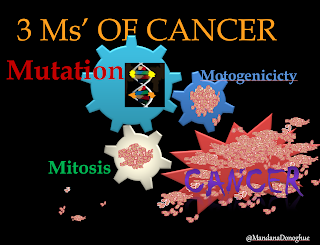I have paraphrased a well-known saying "Not
only must Justice be done; it must also be seen to be done.", not
to make light of the seriousness of the need for justice but to highlight the
importance of scholarly and academic work.
It is undeniable that academic positions are saturated,
and there is minimal possibility of new opportunities. At the same time, dwindling
numbers of new admissions, economic downturn and an ever-increasing pool
of available talent with varying levels of experience make the possibility of staff
turnover a grim reality.
So, whether, you are a student, young unemployed or for that
matter employed oral pathologist, it is time to add to your credibility and
achievement pool. Because merely attending a college in whichever role is not
sufficient. While you are working, gaining knowledge and experience it is really essential that the work is seen. You may wonder why? First, to enable you to do the work and then to help you to continue working and if need be to find a different job where you can continue working.
The most important proof of scholastic/academic work is publications;
this can start with your dissertation, especially if it is relatively recent. Old
work is challenging to publish because of changing technological standards. In
the interest of being honest and open, I have to say my dissertation fell
into the same category. In 1997 it was somewhat difficult to publish, and I
have to admit I did not try hard enough. I presented my findings as two papers
in our national conference, and that was that. Do I wish I had tried? Definitely.
And I hope you will not make the same mistake, if you still can, take the
time and publish your dissertation.
If you have published your dissertation wonderful, but still not
enough. It would be best if you continued, and have more published research. Publications
don't have to be primary research all the time; they can be secondary research
such as literature reviews, systematic reviews, meta-analysis.
But, even before your publications have reached a
significant number, you must have a network of individuals with the same areas
of interest who will read and hopefully cite your work when it is published. This
can be best achieved by joining platforms such as ResearchGate, Google Scholar
and professional networking platform LinkedIn.
ResearchGate an initiative by two researchers in 2008 to enable borderless
collaboration has expanded to include over 17 million researchers from around
the world, and through a service that remains free allows researchers to,
authors and professionals to collaborate, guide and support each other, and share
their work. Research Gate computes a score for all its members. That is considered
an effective indicator of research activity. I have personally received
considerable help from researchers on research gate; I have requested and received
numerous articles and suggestions from researchers I didn't know otherwise.
Google Scholar is another useful platform. It keeps track of
your publications and citations, besides providing an easy way of recording
article's/book's citation in different formats. It also identifies research
that may be interesting to you and is an easy way of finding the top journals in various fields by looking at the metrics.
LinkedIn
is another essential platform; that provides endless networking, collaboration,
and various opportunities to seek and provide help and support.
As I type this, I can picture my ex-students, and many colleagues thinking there we go again, and to be honest, they are right. I have reiterated the importance of building a
global network many times. I was delighted when in a recent interview with Dr Prathibha Prasad about
her journey and life in the UAE as an oral pathologist she also was unequivocal
in her support of the need for an active professional and scholarly presence.
https://www.facebook.com/watch/?v=328969311714356&extid=Lm7Tg9UvbexqYkEv
In my own life, LinkedIn played an important role, especially by making it possible for me to connect with Dr Babak Sarrafpour. I got to know him by just following my routine of connecting with every oral pathologist I find. Then I discovered that he was the only oral pathologist with interest in biomechanics, I visited him at The University of Sydney, and in the course of a most engaging interaction he suggested I submit my work as a PhD proposal. I did, with his help & support and was accepted in the University Of Sydney in a matter of months, sadly couldn't join the program since the cost was beyond my savings. The experience, however, rekindled an old passion for completing my studies, which to me, is a doctorate. Subsequently, I applied and was accepted in another outstanding university, the University of Otago New Zealand, and will hopefully begin my course post-COVID.
I feel a disclaimer is needed; the suggestions are based on
personal views and are not in any way influenced by any of the companies
mentioned. Hope you will be opening these sites to check them out and join if
you haven't already. Creating or even updating your profile can take some time, but you don't have to do it in one day. Just keep aside 15 minutes or half an hour a day, and you should be on your way to a very connected professional life in a matter of days.
Please share your opinions, suggestions and experiences.
And subscribe with your email from the desktop version.







